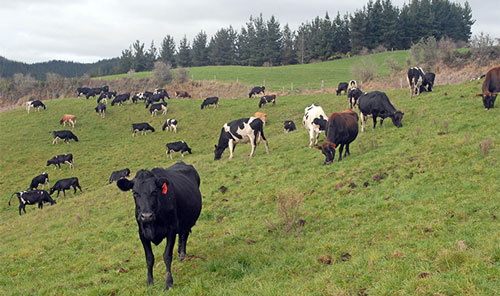
Environmental alarm bells are ringing loudly in New Zealand and its growing dairy cow population is at the front of mounting public awareness about the potential of water pollution.
It's not dairy cow or livestock numbers per se that is fueling discussion among scientists, regulators, lawmakers, the public and farmers, but rather the additive ecological risk they pose in the form of nitrogen from manure.
The numbers are compelling.
Size wise, New Zealand is about as big as Colorado, but it has nearly three-fourths as many cows as the entire U.S. (6.6 million versus 9.2 million). In addition, it has about 31 million sheep, 4 million beef cattle and 1.1 million red deer. The human population is about 4.4 million.
Virtually all of those animals are fed by grazing – and virtually all of their manure falls in pastures that are exposed to 20 to 60 inches of annual rainfall per year. But it is dairy cows that are drawing the most concern, because their population is growing and they produce the most manure.
Things are only in the discussion phase right now, but U.S. dairy producers know how this story tends to end: with stocking limits, manure collection requirements and other regulations that will likely erode the cost of production advantage that New Zealand has over other major dairy exporting nations.








